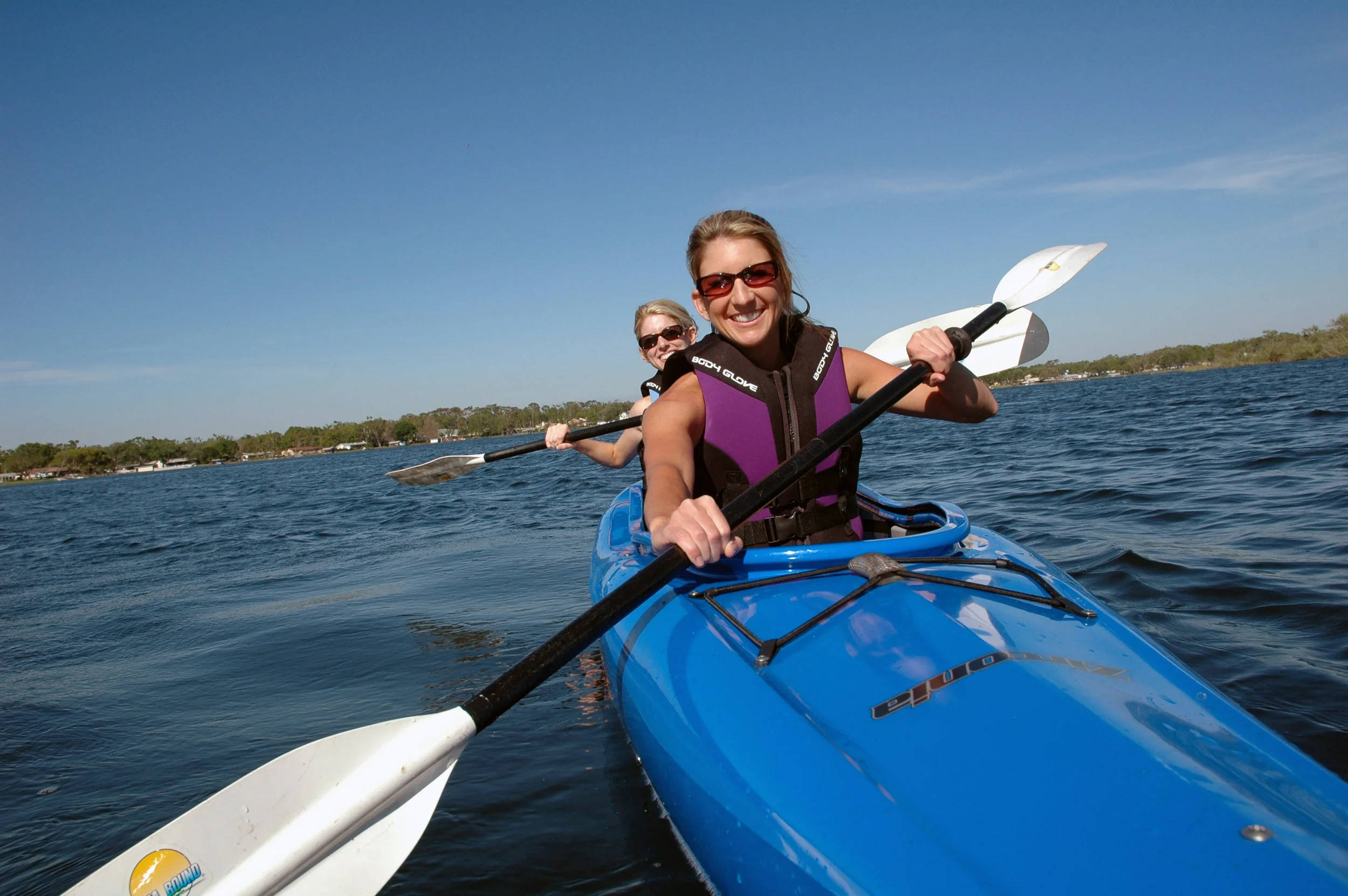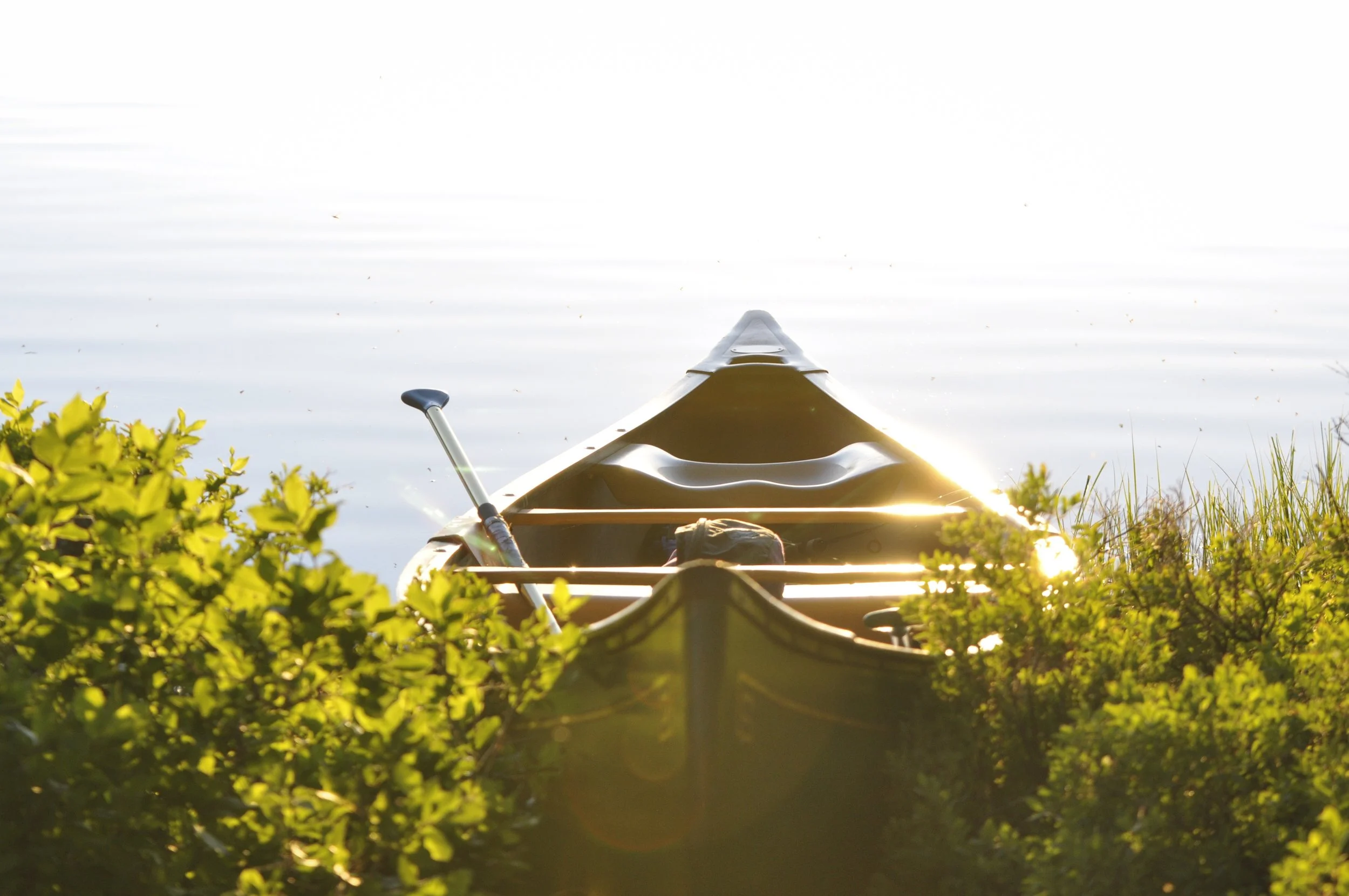Being prepared also means having the right gear. Use a Pre-Departure Checklist to ensure you have the right equipment with you before you go out on the water. The minimum you need is a PFD and sound signalling device, beyond that, the required equipment varies by type and length of your boat, and where and when you plan to paddle. If you’re not sure what you need, check with Transport Canada.
REQUIRED SAFETY EQUIPMENT
Lifejacket or PFD for each person on board*
Reboarding device (See Note)
Buoyant heaving line at least 15 m (49’3”) long
If boat is over 6 m
Watertight flashlight
Flares
Bailer OR One manual bilge pump
Sound-signalling device or appliance
Navigation lights
Note *If everyone on board is wearing a lifejacket or a PFD of appropriate size on a Stand Up Paddle (SUP) Board, you are only required to carry:
a sound-signalling device; and
a watertight flashlight if the boat is used after sunset or before sunrise or in periods of restricted visibility.
TRIP PLAN
Always make a plan and leave it with a responsible person before you go. If no one knows you are gone, no one will be looking for you.
CHECK THE WEATHER
Check the forecast and keep an 'eye on the sky', watching for weather changes.
CHOOSING THE RIGHT LIFEJACKET
When it comes to choosing a PFD, the Canadian Coast Guard strongly recommends bright colours for better visibility. PFDs are now available in many bright colours and activity appropriate styles. Just check the label to ensure that the PFD is approved by the Canadian Coast Guard.
Choose a PFD that is comfortable and allows free movement, including walking and sitting. Try it on and do up all zippers and belts. Pull up on the collar to ensure it does not ride up and interfere with movement or breathing.
Inspect your PFD or lifejacket frequently. Ensure seams are intact, and that snaps, belts or zippers work. If you happen to chose an inflatable type PFD be aware that certain restrictions and criteria apply.
CAUGHT YOU WEARING IT
PHOTO CONTEST
Post a photo of you in your favorite PFD or lifejacket on the waters of B.C. and tag @WaterWise Team for a chance to win weekly prizes.
be visible
Make sure you can be seen on the water. Even in bright, calm conditions a canoe or kayak can be nearly invisible. It is especially difficult for power vessel operators riding high in the water to see these vessels. Choose bright colours such as red, yellow, or orange for your vessel and also for your flotation device. In addition, remember to keep signalling devices within hand’s reach in case of emergency.
KNOW BEFORE YOU GO
Sea kayakers should be aware of their environment (water temperatures, tides, currents, wind, and maritime traffic) at all times.
never paddle alone
Most drowning victims were found boating alone. Always swim and boat with a buddy.





